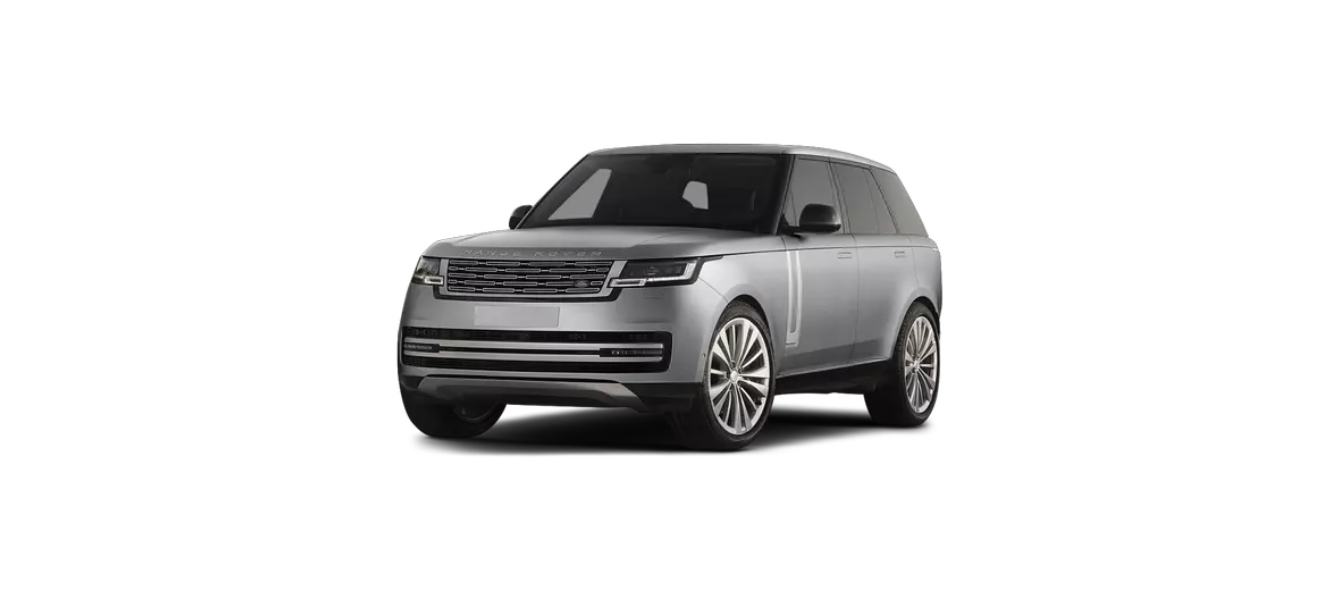2022 Land Rover Range Rover Vehicle Recovery Owners Manual




2022 Land Rover Range Rover Vehicle Recovery


RECOVERY METHOD
Make sure that vehicle recovery and/or transportation is carried out by suitably qualified personnel, and the vehicle is secured correctly. Recovery and/or transportation carried out by unqualified personnel can result in serious injury or death.
The recovery agent must activate the transmission park release before recovery commences. Transmission park release instructions are covered in a separate publication for recovery personnel use. Failure to activate the transmission park release can result in serious transmission damage.
The vehicle should not be towed on all four wheels and should not be recovered with the front or rear wheels suspended. Doing so can result in serious transmission damage.
FRONT TOWING EYE
The front towing eye is designed for on-road recovery only. If the towing eye is used for any other purpose, it may result in vehicle damage and can cause serious injury or death.
Remove the front towing eye cover before driving off-road, to prevent damage or loss. The cover must be replaced before driving on the road.
Make sure that the cover is correctly fitted before driving the vehicle. An incorrectly fitted cover may become detached from the vehicle and may become damaged.
Note the fitted position of the cover before removal.
The front towing point is located behind a removable cover in the lower front bumper.
To remove the cover:
- Rotate each of the four fasteners 90 degrees counter-clockwise with a coin, or a similar object, to release the lower edge.
- Starting at one end, pull the cover forward from the back lower edge to release the center tab and six clips on the top edge of the cover.
To refit the cover:
- Locate the cover and make sure the center tab and six clips at the top edge engage with the holes in the bumper.
- To secure the cover, rotate each of the four fasteners 90 degrees clockwise.
The method for recovery and/or transportation of the vehicle is on a transporter or trailer designed for that purpose.
REAR TOWING EYE
The rear towing eye is designed for on-road recovery only. If the towing eye is used for any other purpose, it may result in vehicle damage and can cause serious injury or death.
Do not use the tow ball for recovering the vehicle. Doing so may result in serious injury or death.
Remove the rear towing eye cover before driving off-road, to prevent damage or loss. The cover must be replaced before driving on the road.
Note the fitted position of the cover before removal.
The rear towing eye may be used to tow another vehicle if required.
The rear towing point is located behind a removable cover in the rear bumper.
To remove the cover:
- Rotate each of the three fasteners 90 degrees counter-clockwise with a coin, or a similar object, to release the lower edge.
- Rotate the cover to release the two side tabs.
- Release the six tabs at the top.
To refit the cover:
- Locate the cover in place and make sure that the six tabs on the top edge engage in the bumper.
- Locate the two side tabs.
- Rotate the three fasteners 90 degrees clockwise to secure the cover.
The rear towing point is located behind a removable cover in the rear bumper.
To remove the cover:
- Rotate each of the two fasteners 90 degrees counter-clockwise with a coin, or a similar object, to release the lower edge.
- Rotate the cover to release the two side tabs.
- Release the six tabs at the top.
To refit the cover:
- Locate the cover in place and make sure that the six tabs on the top edge engage in the bumper.
- Locate the two side tabs.
- Rotate the two fasteners 90 degrees clockwise to secure the cover.
The rear towing point is located behind a removable cover in the rear bumper. The towing eye is stored in the tool kit, located in the underfloor area of the loadspace.
To remove the cover:
- Rotate each of the two fasteners 90 degrees counter-clockwise with a coin, or a similar object, to release the lower edge.
- Pull the lower edge of the cover rearward to release the three tabs at the lower edge.
- Rotate the cover to release the six upper tabs and the two side tabs.
- Screw the towing eye counter-clockwise into its fixing, until secure.
To refit the cover:
- Locate the six upper tabs and the two side tabs.
- Locate the three lower tabs.
- Rotate the two fasteners 90 degrees clockwise to secure the cover.
OFF-ROAD RECOVERY
If the towing points are to be used for off-road recovery, it is essential that off-road driver training, covering recovery techniques is undertaken. Further information on off-road driver training can be found at: www.landroverexperience.com.
TRANSPORTING THE VEHICLE
Use extreme caution when moving or towing the vehicle. Death or serious injury may occur.
The front and rear tie-down points must be used only for securing the vehicle during transportation. If they are used for any other purpose, it may result in vehicle damage and serious injury. The recommended method for recovery/transporting the vehicle is by a trailer designed for that purpose. Always use qualified persons to perform recovery and to make sure that the vehicle is secured correctly.
If the vehicle’s electronics are operational, the air suspension must be set to access height, before securing the vehicle to a recovery vehicle or trailer. Failure to do so can result in damage to the vehicle.
TOWING THE VEHICLE ON FOUR WHEELS
The vehicle should be recovered with all four wheels clear of the ground, i.e., on a trailer. However, if the vehicle cannot be recovered by using the correct method, in an emergency, the vehicle can be towed on all four wheels for a short distance. Please adhere to the following guidelines.
The recovery agent MUST activate the Emergency park release before towing commences. This procedure is covered in a separate publication for service personnel.
If transmission Neutral (N) is selected and the engine is then switched off, the transmission will automatically select Park (P) after 10 minutes have elapsed. At this point, if the Emergency park release has not been activated and the vehicle is being towed, serious damage to the transmission will result. There is also a danger to personal safety.
If the engine cannot be used during towing, there will be no power assistance to the braking or steering systems. This will result in a much greater effort to steer and stop the vehicle and in a greatly increased stopping distance.
Only tow the vehicle in a forward direction with all four wheels on the ground. Towing in a reverse direction or with only two wheels on the ground can cause serious damage to the transmission.
Do not tow the vehicle for more than 30 miles (50 km). Do not exceed 30 mph (50 km/h). Towing for a greater distance, or at a higher speed, may result in serious damage to the transmission.
Do not tow the vehicle if the transmission cannot be set in Neutral (N), or if the rear electronic differential has failed in the locked position. Doing so can cause serious damage to the transmission.
The following procedure must be carried out carefully to prevent damage to the vehicle:
- Secure the towing attachment from the recovery vehicle to the front towing eye. See FRONT TOWING EYE.
- With the Electric Parking Brake (EPB) applied, switch on the ignition.
- Apply the brake pedal and rotate the selector to Neutral (N).
- Activate the Emergency park release.
- Switch off the ignition and leave the Smart key in a secure place inside the vehicle.
- The ignition may be switched on to allow the operation of the turn signals, brake lamps, etc.
- Release the EPB before towing the vehicle.
Leaving the ignition switched on for extended periods will drain the vehicle’s battery.
AFTER TOWING ON FOUR WHEELS
- Apply the Electric Parking Brake (EPB).
- Switch on the ignition and apply the brake pedal.
- Rotate the gear selector to Park (P).
- Deactivate the Emergency Park Release.
- Switch off the ignition and remove the Smart key from the vehicle.
- Remove the recovery vehicle’s towing attachment from the front towing eye and refit the cover.
Use extreme caution when detaching towing equipment. Vehicle movement is possible which can result in serious injury.
Recent Posts
VW Jetta Engine Fuse Box Diagram
Access the comprehensive 2010-2018 VW Jetta Passenger Fuse Box Diagram to troubleshoot electrical issues effectively.…
VW Jetta Passenger Fuse Box Diagram
Explore the comprehensive VW Jetta Passenger Fuse Box Diagram to troubleshoot electrical issues effectively. Understand…
2023 Ford F-150 Lightning Fuse Box Diagram
Under Hood Fuse Box Location Remove the front luggage compartment cover. Under Hood Fuse Box…
2022 Kawasaki NINJA H2 SX SE Brake Lever Adjuster Owner’s Manual
2022 Kawasaki NINJA H2 SX SE Brake Lever Adjuster Owner's Manual NOTICE Only adjust the front…
2023 Land Rover Range Rover Evoque Exiting The Vehicle Owners Manual
2023 Land Rover Range Rover Evoque Exiting The Vehicle SINGLE LOCKING WARNING Before exiting the…
2023 Land Rover Range Rover Evoque Front Seats Owners Manual
2023 Land Rover Range Rover Evoque Front Seats FRONT SEAT SAFETY Make sure to read…
